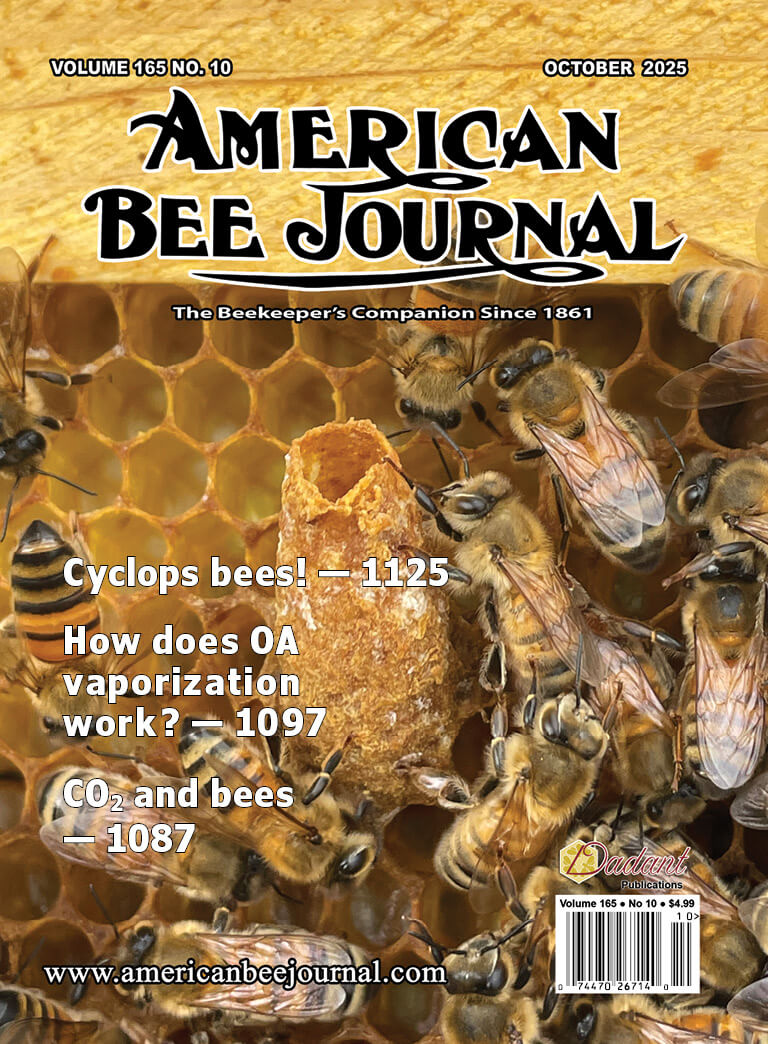
Q POWDERED SUGAR for VARROA
Hi Jerry,
Several folks in my area recommend a powdered sugar treatment simultaneous with ApiLifeVar thymol treatment. However, I get confusing advice on powdered sugar. Is it the grocery store stuff that has some cornstarch or is there a “pure” non-cornstarch product, and if so where does one find it?? I’m a relative newbie and find the adage “ask 10 beekeepers & get 15 answers” to be true!! Very much appreciate you & the American Bee Journal!!
Thanks,
Anita
A
First learn to identify varroa levels in a colony at the right time, and then control varroa at the right time with the right methods. Add in verifying that your varroa controls actually worked, and that will be the difference between if you can be a successful beekeeper manager and not kill your colony, or getting frustrated and moving on to an easier hobby like stamp collecting.
Not wanting to ‘re-invent the wheel’ the Honey Bee Health Coalition (HBHC) has developed the best tool for learning the why, when, where, and how to control varroa. Link is below.
https://honeybeehealthcoalition.org/wp-content/uploads/2015/08/HBHC-Guide_Varroa-Interactive-PDF.pdf
Now to your question. First are you sure you are only getting 15 answers from 10 beekeepers??? The worst thing is the 1-3 year beekeeper, who is now the world expert, having a web site and YouTube channel. The industry’s lack of a real go-to location that offers all things informational/educational has been our downfall. The HBHC is trying to fill that gap and has made tremendous progress, but it will be awhile before it is generally identified as such. In the meantime, I am glad you are asking questions and are confused, as that means you are thinking deeply about how to keep your colony healthy.
When a varroa has reproduced on a larva/pupa in a cell it exits that cell and enters the ‘dispersal’ phase as it rides around on an adult bee for transportation, looking for another brood cell to enter so it can lay eggs and reproduce on the next larva, making your colony sicker. Removing as many varroa as possible safely will directly impact the positive health of the honey bees. In this dispersal phase, if a powder or dust is applied and is widely shared on all the bees, it gets on the foot pads of varroa, they can’t hang on to the bee they are riding on and fall off. If you have a screened bottom they can fall through and out onto the ground and poof they are dead. It is an irritant to the bees, as they don’t like being covered in a dust, so they engage in grooming behavior more actively, removing additional mites.
This technique started in Asia using rice flour. This was adapted in the West using powdered sugar, as it is a dust and the bees can then clean themselves up, eating the varroa control product. Don’t worry about the corn starch in grocery store powdered sugar to prevent clumping and caking. It is a very small amount. Bees eat a lot of stuff that is indigestible and at this time of year getting out and defecating is easy. With all the other stuff they eat, using powdered sugar is not a game stopper. Remember that 2/3rds of all varroa mites are generally hiding and reproducing behind capped cells. So, they are protected and immune from 99% of the varroa control methods and products. Using powdered sugar and thymol and all the products that use a combination of essential oils is a great technique, but remember that varroa are emerging every day, because they have been protected behind capped cells. To keep abreast of the situation, sample, treat if necessary, and sample again. Additional treatment decisions, if needed, will have to be made.
Sorry for the long Jerry answer, but there it is. I hope it helps you.
From Anita
Thanks Jerry. The quality & depth of your answers is why I love your column. Sorry for such a basic question. This is year two for me, and I am trying to get all the stuff right!!
Thanks again,
Anita
Q OLD HONEY IN SUPERS
Dear Jerry,
Unfortunately, we were not able to extract honey when we wanted to this fall. The supers have been kept in the garage with bottom boards and top covers. Rodent proof. Can we still extract for our own use, or should we just plan on feeding back to next year’s bees? Living in western WY, we don’t have the humidity or hive beetle that lots of people online were saying put a time crunch to extracting.
Thanks!
Nina
A
Hey Nina,
If it hasn’t granulated, the original moisture was below 18% or so to retard fermentation, and the honey while in storage was not exposed to chemicals, you are good to go.
Enjoy.
Q How Far Apart
How far apart should you set your hives?
Thanks,
Maynard Martin
A
Great question Maynard,
Honey bees use all sorts of visual and sensory cues to find their home. Size, shape, color, distinctive markings, odors, all help foragers locate their home, their sisters and their queen.
Before varroa when there were lots of wild colonies living successfully in a hollow tree or attic of somebody’s house, they tried to separate themselves from other colonies by hundreds of yards when colony living space was easy to find.
But when colonies are very close as is common with commercial beekeepers, who typically hold 4 or 6 colonies on a pallet, each colony becomes a visual duplicate of all the others. Sometimes the bees get confused and can go to the wrong colony carrying pollen, nectar, varroa mites, and/or diseases back and forth. Not great, but for efficient transport …


